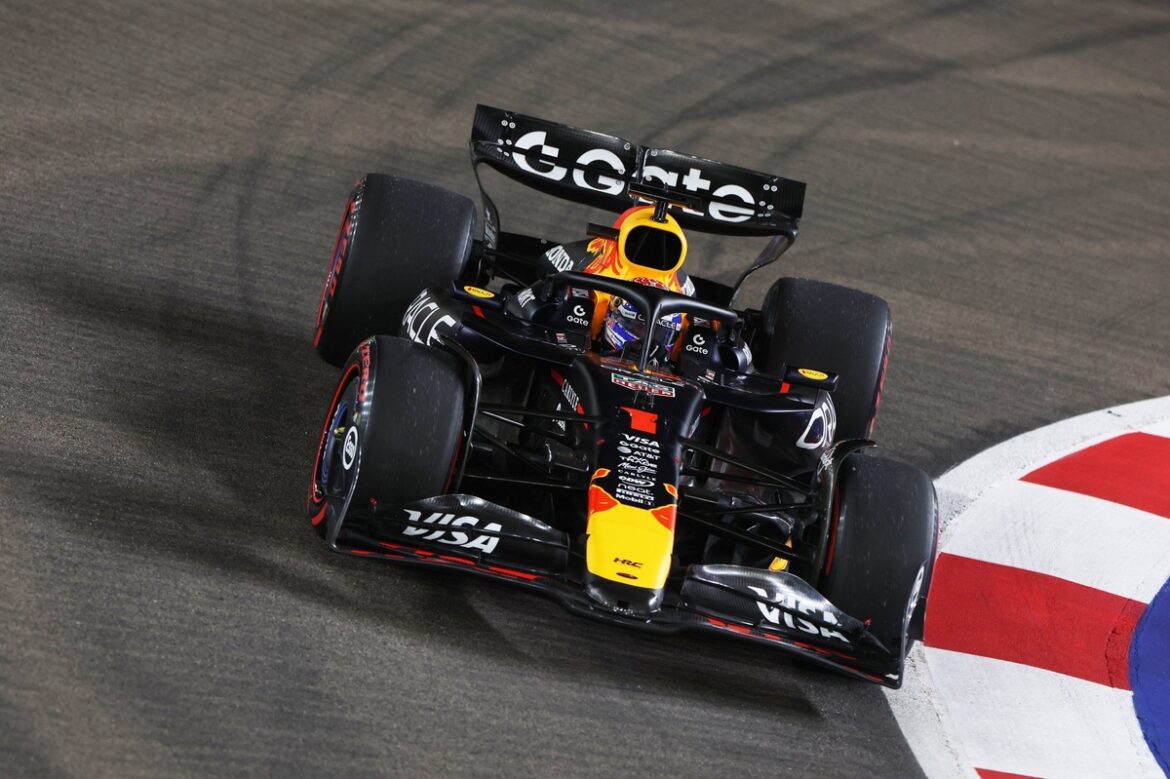Red Bull Racing’s Strategic Developments: Balancing Immediate Performance and Long-Term Goals
In the fast-paced world of Formula 1, teams are constantly striving to improve their cars and performance on the track. Red Bull Racing, a prominent contender in this high-octane sport, has recently made significant upgrades to its RB21 model. Despite the imminent changes in regulations set for 2026, Red Bull’s chief engineer, Paul Monaghan, revealed that the team managed to implement a new floor for the car during the Italian Grand Prix in Monza. Max Verstappen, one of the leading drivers in the team, acknowledged that this floor upgrade “definitely helped” enhance the car’s performance.
Ongoing Upgrades and Their Implications
While many teams are focusing on long-term projects in anticipation of the regulatory changes, Red Bull continues to make strategic upgrades that yield short-term gains. Following the introduction of the new floor at Monza, the team also rolled out a new front wing during the Singapore Grand Prix. Monaghan emphasized that these enhancements were executed without overly compromising the development efforts aimed at the 2026 project.
Although these new components were not the sole reason for Red Bull’s recent resurgence in performance, they certainly contributed positively. Now, the challenge lies in balancing the pursuit of immediate performance improvements with the long-term vision for F1’s evolving landscape.
Team principal Laurent Mekies has acknowledged the potential trade-offs associated with extending the development of the RB21. He pointed out that the constraints imposed by the cost cap and the Aerodynamic Testing Restrictions (ATR) system may have implications for Red Bull’s 2026 objectives. Nonetheless, Mekies believes that the decision to continue enhancing the current car aligns with the team’s overall strategy.
The Importance of Validating Development Tools
Mekies stresses that understanding the performance capabilities of the RB21 is crucial for the team’s future endeavors. He stated, “It is very important that we get to understand if the project has more performance.” By validating the current car’s performance, Red Bull can ensure that the methodologies and tools they use for development are reliable.
This validation process is essential, as it provides a strong foundation for the development of the next-generation car. By confirming that their analytical approach to data is sound, Red Bull can move forward with confidence into the 2026 season. Mekies explained, “It’s very important that we validate with this year’s car that our way of looking at the data is correct.” The team aims to leverage the insights gained from the RB21 to inform their strategies for the forthcoming regulations.
Strategic Choices Amidst Competitive Pressures
The decision to continue developing the RB21, despite the upcoming regulatory shifts, reflects a strategic choice made by Red Bull. Mekies pointed out that while this approach may come at a cost to their 2026 project, it is a necessary trade-off that aligns with the team’s objectives.
In contrast, other teams like McLaren have adopted a different strategy. Andrea Stella, McLaren’s team principal, indicated that his team has halted development on their current car to focus entirely on the 2026 regulations. This divergence in approaches is largely influenced by the varying circumstances faced by each team, as well as their respective standings in the constructors’ championship.
A Comparative Analysis: Red Bull vs. McLaren
McLaren’s decision to shift focus towards the major regulatory changes makes sense given their strong position in the constructors’ championship. Having secured a comfortable lead in this competition, the team can afford to redirect its resources and attention toward the future. Stella noted, “We have stopped the development of the car now for quite some time… while we have seen that some competitors kept taking trackside some new upgrades.”
On the other hand, Red Bull has faced distinct challenges. After a period of misalignment between their simulation tools and actual on-track performance, Mekies and his team realized the necessity of addressing these discrepancies before embarking on the 2026 project. This situation underscores the importance of validating their tools against the current car to avoid entering the new regulatory era without a clear understanding of their capabilities.
Mekies described the past eighteen months as a time when the team was effectively “looking at different watches,” meaning their simulations were not accurately reflecting real-world performance. By continuing to develop the RB21, Red Bull is establishing a solid foundation for the future, ensuring that they have reliable data and insights to guide their next steps.
The Road Ahead: Preparing for 2026
As Formula 1 gears up for a new era of regulations in 2026, teams are faced with the challenging task of balancing immediate performance with long-term goals. For Red Bull, the strategic decision to enhance the RB21 while preparing for the upcoming changes is a calculated risk. By validating their development tools with the current car, they are positioning themselves to make informed decisions as they transition into the new regulatory landscape.
In a sport where every detail counts, Red Bull’s approach exemplifies a commitment to understanding the intricacies of car development. Rather than blindly pursuing performance upgrades, the team is prioritizing a deep understanding of their current vehicle and its capabilities. This foundation will be instrumental as they look ahead to the challenges and opportunities that lie within the 2026 season.
Conclusion
In conclusion, Red Bull Racing’s approach to car development amidst the backdrop of changing regulations highlights the complexities of Formula 1. The team’s commitment to ongoing upgrades while preparing for the future demonstrates a strategic balance that could serve them well in the coming years. As they validate their methodologies and continue to refine their understanding of performance, Red Bull is poised to remain a formidable force in the sport. With a focus on both immediate gains and long-term objectives, the team is navigating the intricate landscape of Formula 1 with a clear vision for success.
